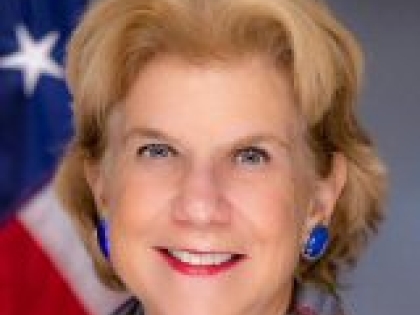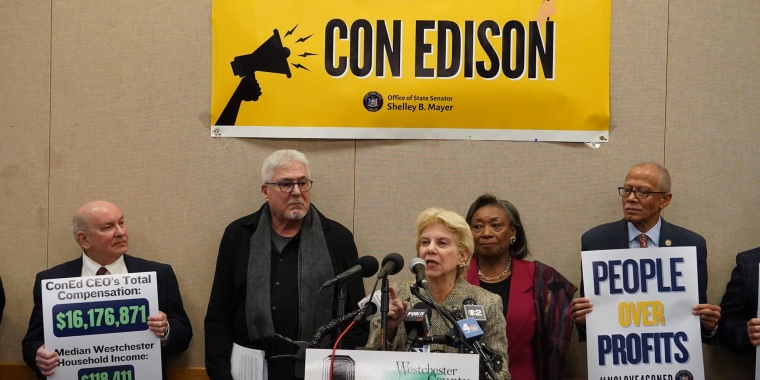
LOHUD: Westchester's first 'Freedom School' aimed to narrow literacy gap in students of color
Samantha Antrum
September 4, 2024
On a summer morning at the White Plains Children's Defense Fund Freedom School, the sound of kids cheering and chanting could be heard through the halls of Union Baptist Church.
“G-O-O-D M-O-R-N-I-N-G, GOOD MORNING!" The chanters clapped rhythmically. “GOOD MORNING!”
At Freedom School, children get a chance to bolster reading skills, and in White Plains, the need for such a program is greater than ever.
On the state’s 2023 standardized tests in English/language arts for grades 3-8, 43% of White Plains students were deemed “proficient,” compared to 48% of students statewide. Results varied greatly by race in White Plains.
During the 2022-23 school year, 59% of White Plains students were Latino/Hispanic, 22% white, 11% Black and 5% multiracial.
On the third-grade tests, 63% of white students in White Plains were deemed proficient, compared to 38% of Black students and 28% of Latino/Hispanic students.
As of 2022, the achievement gap between white and Black students, as well as between white and Latino students, when it comes to reading is now worse for New York fourth graders than it was in 1992, according to government data provided by the Nation's Report Card website.
White and Black students in NY both scored slightly lower on state reading exams in 2022 than they did in 1992. According to the data, Black fourth graders a 199 in reading in 1992, while white students scored 226. In 2022, Black students scored 194, while white students scored 223. In 2019, Black students scored 203, and white students scored 229. Students were not tested in 2020 due to the COVID-19 pandemic, and only Session 1 tests were required in 2021.
How were students selected for White Plains Freedom School?
“The educational gap and reading literacy gap drove why we needed to do Freedom School," said Tiffany S.W. Hamilton, CEO of YWCA White Plains & Central Westchester. Hamilton called recruitment for Freedom School a "grassroots" effort, which incorporated social media, hitting the pavement at community events and "talking about it everywhere we went."
The recruitment effort paid off — the program, structured to serve 50 kids, received 52 applicants. No student was turned away from the inaugural White Plains program.
CDF Freedom School is a national movement. Across the country, children (called “scholars” in Freedom School) gather with paid, college-age instructors (called “servant leader interns”) for a social justice-themed program for kids. During the program, instructors guide students through a literacy curriculum meant to help children retain the reading skills they gained during the school year.
Enrichment activities, such as art, science and field trips (virtual and in-person) supplement the curriculum to create a holistic program that is not quite summer camp and not quite school, but a combination of the best of both, with no cost to the families whose students are enrolled in it.
“Some folks can’t afford Camp Funkist [the YWCA’s summer camp],” Hamilton said about distinguishing Freedom School from the camps that took place this summer. “We wanted to identify an equally quality and fun experience that we could offer at no cost to families while implementing fun, implementing the social engagements, but also peppering in the social justice components that come with Freedom School.”
The program came at no cost to the students, thanks to YWCA’s fundraising efforts, sponsors and community partners like Regeneron, the Pepsico Foundation, the White Plains Community Development Building Grant (CDBG), the Westchester County Board of Legislators and many others.
Hamilton said calls to expand the White Plains Freedom School are already happening, and the YWCA is working toward fostering fresh relationships with school districts. Building relationships and other grassroots efforts will allow Hamilton to tell the "story" of Freedom School, "so that we can get on the radar of families early."
Why Union Baptist Church?
The Union Baptist Church was a natural fit as the setting for the program.
“They definitely have deep presence in our service area as it relates to offering services and support to community members that aren’t members of the church," Hamilton said, noting that its location near public transit and across from Theodore Young Community Center also sent a message to the community "that 'this was for you.'"
Churches are often selected as Freedom School locations.
“The Freedom Summer of 1964, the safest place for the Freedom Schools of that time, to be able to do the work that they needed to do, were within faith-based spaces. A lot of local churches opened their fellowship halls so that those courses could take place," Hamilton continued, noting that Union Baptist also deeply discounted the use of the space. "That model has consistently repeated itself because it's often those entities offer the spaces at a much more reduced rate than if we were to go rent a community center.”
Children's Defense Fund Freedom School's historic origins
The Defense Fund started its first Freedom School sites in 1995. Two locations, in Bennettsville, South Carolina, and Kansas City, Missouri, opened that year. But the inspiration for the program’s founding was three decades earlier.
It was the summer of 1964 in Mississippi. The Freedom Summer Project was started by the Council of Federated Organizations, a coalition of groups including the Student Nonviolent Coordinating Committee (SNCC), the Congress of Racial Equality (CORE), the National Association for the Advancement of Colored People (NAACP) and the Southern Christian Leadership Conference (SCLC) came together to create a program to engage both Black and white voters in the political process and ensuring basic rights, such as the right to vote, for Mississippians.
That summer, more than 800 students volunteered to be trained to register Black voters, teach literacy and civic engagement and promote the challenge that the Mississippi Freedom Democratic Party’s made against the all-white Democratic delegation at that summer’s Democratic National Convention.
Marian Wright Edelman founded the Defense Fund in 1973 with the aim to ensure every child had a healthy, fair, safe and moral start to life. To carry out that mission, the Defense Fund launched a campaign in 1990 called the Black Community Crusade for Children, which included youth development programs, the Harlem Children’s Zone and CDF Freedom Schools.
These actions inspired the principles that eventually formed CDF’s first Freedom Schools: leadership, literacy and social responsibility.
By the time those first Freedom School locations launched in 1995, the Defense Fund had a reading curriculum and lessons plans ready, with hands-on activities to accompany them. Combined with parental involvement, conflict resolution and social action, the program set out to, as the CDF Freedom Schools’ online history reads, “change the odds for America’s children.”
The program grew from that point on. According to the Defense Fund, Freedom Schools have served more than 200,000 students since they first began in 1995; more than 11,600 students were served in 2023 alone.
A typical day at Freedom School in White Plains
Of 139 Freedom Schools across the country, eight are in New York, and White Plains is the only Freedom School in the Hudson Valley.
For six weeks this summer, more than 50 students showed up to Union Baptist Church in White Plains from 8 a.m. to 3 p.m., Monday through Friday.
Students received breakfast as a group, then shouted Harambee together — a series of high-spirited chants and cheers with African roots focused on empowerment — before heading to classrooms organized by grade level.
Instructors led students through reading activities for the first half of the day, which included exercises like D.E.A.R. ("Drop Everything and Read"). During D.E.A.R., a student gets free time to read a book of their choosing. Sometimes, a special guest chose a book to read to the students for "Read Aloud."
During the afternoons, the program dovetailed into the more summer-camp-like activities. Students went on virtual and in-person field trips, including an online tour of the National Museum of African American History and Culture, and a visit to the Kensico Dam to learn how it plays a part in Westchester County’s water supply.
In the fourth and fifth grade classroom, instructor Jenesis Norwood, a senior at Howard University, began one of her literacy lessons with a novel called “Take Back the Block.” She asked for volunteers to take turns reading the first chapter of the book, a story about a boy who hates getting dragged to protests with his mom, but realizes their importance once he sees new buildings going up in his neighborhood that are pushing out the longtime residents.
Three children volunteered to read. For each student, Norwood stood behind them to help them if they stumbled upon any unfamiliar words. Page by page, Norwood alternated reading with the students, stopping every few minutes to ask questions of the children, checks to make sure they understood what they read.
As they finished the first chapter, one student shouted: “I feel accomplished!”
Contributing: Lohud's Gary Stern and Ashley Fontones
Share this Article or Press Release
Newsroom
Go to Newsroom
Con Ed Rate Hike Rally at Westchester County Center
February 18, 2025
What’s Next for Reproductive Rights, Hochul’s State Agenda
February 18, 2025
Students Pose Questions to Lawmakers at PTC Breakfast
February 11, 2025